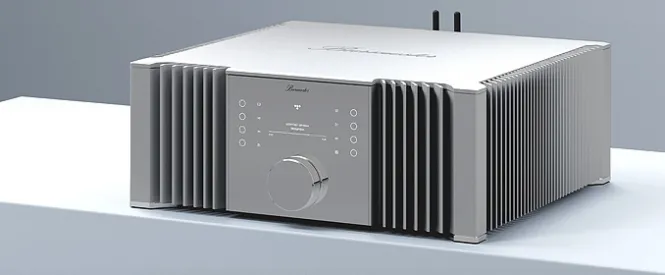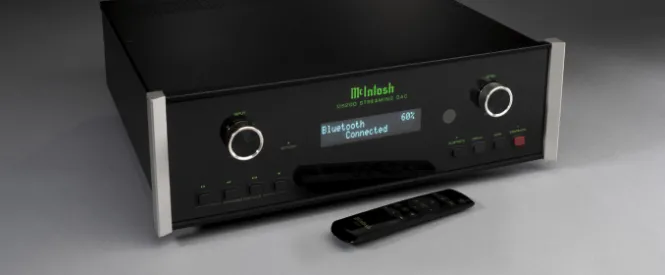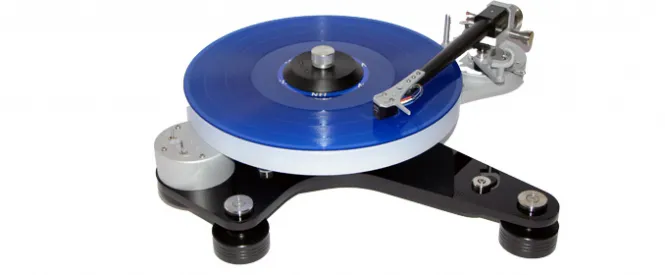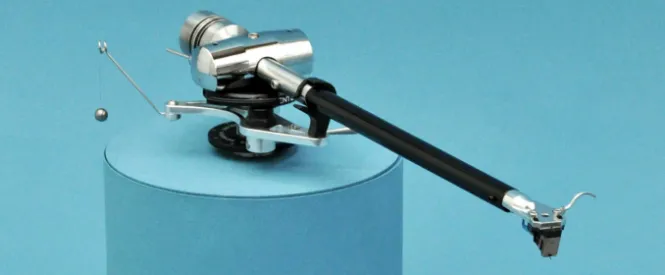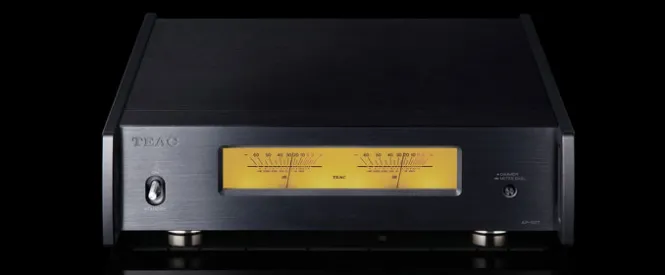Sonos Move 2 Loudspeaker Review
Simon Lucas tries his luck with the latest portable wireless speaker from this iconic US audio brand…
Sonos
Move 2 Portable Speaker
£449 RRP
At Sonos, the word 'rapid' is seemingly as subjective as the word 'portable'. But four years after the company launched the Move – its first Bluetooth-enabled wireless speaker – the replacement is ready. Move 2 is a slightly more radical rethink than the name implies, however, even if it's no more portable than the product it replaces.
UP CLOSE
Sonos has had you covered for a properly portable wireless speaker ever since its fist-sized Roam, launched in 2021. Despite it having a carry-handle recessed into the rear of its cabinet, the new Move 2 is just as much of a biffer as the original. The company still reckons Move 2 is a portable device, although at 241x160x127mm [HxWxD] and 3kg, it is unlikely to travel much further than your garden.
This new speaker may look very similar to the product it replaces, but Sonos hasn't been sitting on its hands in the four years that have elapsed since the original Move hit the street. On the outside, there's a new finish; for example, as well as matte black or white, it can also be yours in matte olive. The touch-controls on the top surface are now a 'tap' or 'swipe' collection that cover off 'play/pause', 'skip forwards/backwards', 'volume up/down' and 'summon voice assistant'. There is compatibility with Amazon Alexa and Sonos Voice Control. These share the top panel with mic openings that deal with voice-assistant interaction and the 'Trueplay' feature, which tunes the speaker to its surroundings.
The USB-C socket on the rear panel can now act as a charge port, so if you don't mind battery life taking a hit, Move 2 can be a power bank for your smartphone or what-have-you. The USB-C socket is, of course, the secondary method of charging; Sonos provides a charging base, which is a sort of powered hoop for the Move 2 to sit in, as its preferred method. In the rear recess that functions as the speaker's handle, there are 'power on/off' and 'Bluetooth pairing' buttons. There's also a switch to defeat the mics if privacy trumps operational convenience for you.
There are greater changes on the inside. This being a Sonos product, there are lots of things that are inexplicably closely guarded secrets – but not, fortunately, everything. So, where the original Move was a mono device that used waveguides in a (fairly futile) attempt to create as wide a spread of sound as possible, the Move 2 is a stereo speaker. This configuration is achieved by using left- and right-firing tweeters to offer authentic channel separation; they're augmented by a single forward-facing mid/bass driver. It's too much to hope for any details of the size, composition or frequency response of this driver array of course, just as it is to expect to know the amount of power churned out by the three blocks of Class D amplification that drive them.
The battery that powers Move 2 is still replaceable but now lasts for a full 24 hours between charges; this is a significant upgrade on the miserly 11 hours offered by its predecessor. Wireless connectivity is via Bluetooth 5.0 and Wi-Fi, distinct from the first Move, which was strictly Bluetooth or Wi-Fi when it was running. The USB-C socket offers greater connectivity, as it can operate as an input as well as charging in both directions. The Sonos Line-In Adapter that's required to activate this functionality is a cost option, though. Of course it is…
The aforementioned 'Trueplay' feature that Sonos is so proud of is automatic in its implementation. The Move 2 routinely assesses its surroundings and tunes its frequency response accordingly – and its surroundings can be varied thanks to the speaker's IP56 rating. Of course, it's possible to fiddle quite fundamentally with the EQ levels using the S2 version of the Sonos control app. This is also where you get to integrate your streaming service of choice, access Sonos Radio, turn two Move 2s into a stereo a pair, or integrate your Move 2 into a wider Sonos multi-room system. As usual, this control app sets the standards to which other brands can only hope to aspire.
THE LISTENING
Sonos likes to keep its secrets, but putting the Move 2 through its paces reveals a detail or two. Using Apple devices to stream using AirPlay 2 suggests this product is happy to receive proper high-resolution audio files (24-bit/192kHz and DSD64) from a MacBook Pro that's running Colibri software. However, of course, it doesn't reveal how much – if at all – the Move 2's DAC architecture steps on this torrent of information in order to get it out again. But when the switch to streaming via a Nothing Phone (2) using Bluetooth is made, the news is better defined. This Android device is capable of deploying aptX HD, LDAC or LDHC codecs in order to maximise the quality of its wireless stream. Yet the Sonos will not accept them, preferring instead to stick to the more commonplace SBC and AAC codecs. "Is the Move 2 an authentically high-resolution speaker?" isn't a question that can be confidently answered in the affirmative, then.
Mind you, possession – or otherwise – of this sort of information ultimately plays second fiddle to the way the Move 2 sounds when given content of any and all technical standards. And there's no denying that a 24-bit/192kHz file of Neil Young's Roll Another Number sounds satisfyingly dilapidated when the Sonos gets hold of it. The scandalously sloppy, bum note-heavy vocal projects well, revealing the singer's disdain for microphone technique and the hard plosives and sibilants that result. Low frequencies are deep and textured, with enough fine detail to allow an educated guess both at the bass guitar's string gauge and how badly in need of a wipe the strings are. There's a very agreeable immediacy to the way the Move 2 handles the recording, and a facility with timing that's sufficient to make the relationship between bass and drums sound genuinely uncertain.
The more accomplished and proficient sound of Camera Obscura's Suspended from Class as a 16-bit/44.1kHz file allows the Sonos to demonstrate its tonal neutrality and fine top-end attack. Detail levels remain high, especially through the midrange, so the character and attitude of the vocal line is delivered intact. Low-frequency control is firm, and rhythmic expression is convincing as a result. This is not an especially complex or element-heavy recording, but the Move 2 nevertheless serves it up as a nicely unified whole, with a sense of occasion to its presentation.
There's slightly less positivity to a Bluetooth stream of Exploding Upwards by Szun Waves, both where definition and dynamics are concerned. The levels of fine detail retrieval remain quite impressive, but rather than create some space between the competing strands of the recording, the Sonos piles it up somewhat – like a kind of sonic wedding cake. The tune's gentle but inexorable build in dynamic intensity is more gentle than it is intense.
This relative lack of spaciousness is not to be compared to the confined, obvious point-source of the original Move, you understand. The rearranged and improved driver line-up offers a wider and more open presentation than the outgoing device, and while you'd never confuse it for the sound of a more than one-box loudspeaker, it does at least sound like quite a large, immersive single-box design. In this respect, Move 2 is a worthwhile upgrade on the original.
The Sonos S2 control app allows the end user a fair amount of input into the overall sound of the Move 2, thanks to EQ sliders for bass and treble. There's also a loudness on/off control – and loudness is just as much of a euphemism here as it is in any other application. If you've decided to take Sonos at its word and are using your Move 2 in the great outdoors, this is quite a helpful feature. The relative lack of boundaries can make the Move 2 sound slightly lightweight or tentative. Indoors, however, it's a different matter. Despite the attentions of Trueplay, the speaker invariably sounds musclebound and ponderous when loudness is engaged. Switch it off, and while some of the out-and-out substance of the sound goes astray, the gains in bottom-end precision and rhythmic expression are worth the trade-off.
THE VERDICT
No, this is not an especially affordable wireless speaker. And no, it's nowhere near as portable as Sonos seems to think. Yet there is still much to like about the Move 2. It is deftly revealing, has significantly greater scale than the speaker it replaces, and is capable of hitting hard enough to make your garden party swing. Oh, and now it has the stamina to keep the party going until the wee small hours, too. The fact that it can be half of a stereo pair, part of a multi-channel system or a multi-room system – all with complete ease – doesn't do any harm either. Just try to remember that one person's 'portable' is another's 'really not all that portable at all'!
Visit Sonos for more information
Simon Lucas
Simon was editor of What Hi-Fi? magazine and website and has since written for Wired, Metro, the Guardian and Stuff, among many others. Should he find himself with a spare moment, Simon likes publishing and then quickly deleting tweets about the state of the nation (in general), the state of Aston Villa (in particular) and the state of his partner’s cat.
Posted in: Loudspeakers | Active | Smart / Bluetooth | Hi-Fi | Lifestyle | Smart Homes & IoT
JOIN IN THE DISCUSSION
Want to share your opinion or get advice from other enthusiasts? Then head into the Message
Forums where thousands of other enthusiasts are communicating on a daily basis.
CLICK HERE FOR FREE MEMBERSHIP
Trending
applause awards
Each time StereoNET reviews a product, it is considered for an Applause Award. Winning one marks it out as a design of great quality and distinction – a special product in its class, on the grounds of either performance, value for money, or usually both.
Applause Awards are personally issued by StereoNET’s global Editor-in-Chief, David Price – who has over three decades of experience reviewing hi-fi products at the highest level – after consulting with our senior editorial team. They are not automatically given with all reviews, nor can manufacturers purchase them.
The StereoNET editorial team includes some of the world’s most experienced and respected hi-fi journalists with a vast wealth of knowledge. Some have edited popular English language hi-fi magazines, and others have been senior contributors to famous audio journals stretching back to the late 1970s. And we also employ professional IT and home theatre specialists who work at the cutting edge of today’s technology.
We believe that no other online hi-fi and home cinema resource offers such expert knowledge, so when StereoNET gives an Applause Award, it is a trustworthy hallmark of quality. Receiving such an award is the prerequisite to becoming eligible for our annual Product of the Year awards, awarded only to the finest designs in their respective categories. Buyers of hi-fi, home cinema, and headphones can be sure that a StereoNET Applause Award winner is worthy of your most serious attention.

